Studio Visit
California Artist Victoria Fu on Bridging Analog and Digital Realities
Take a peek inside the artist's San Diego studio.
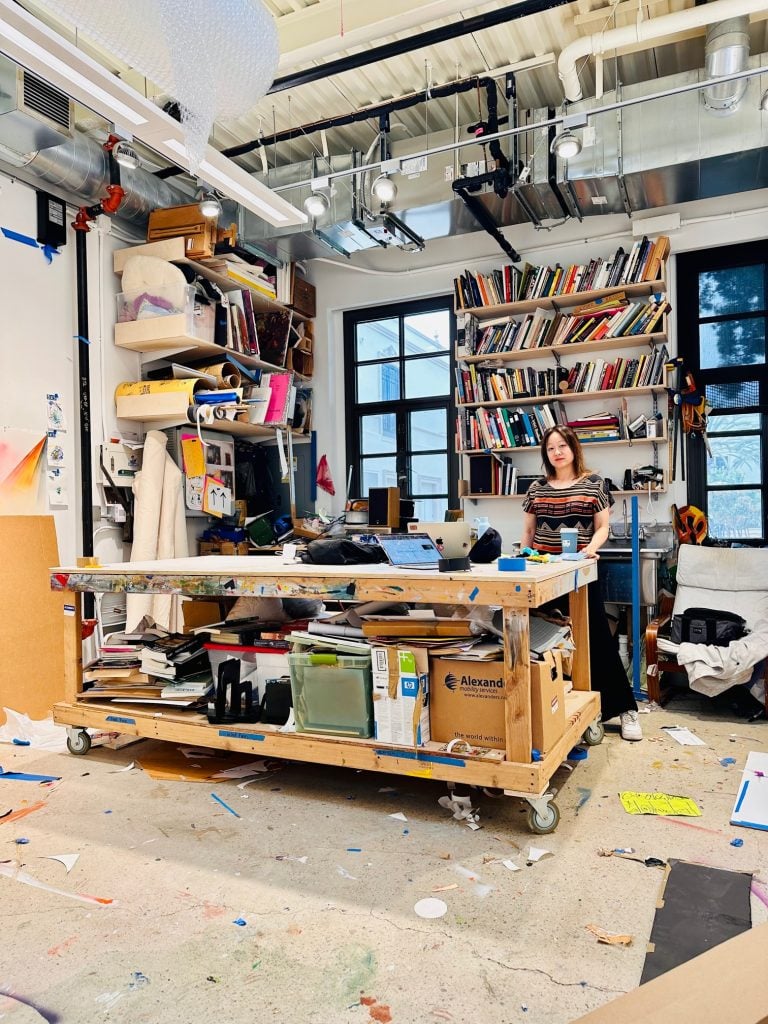
Take a peek inside the artist's San Diego studio.

Katie White

The San Diego-based Victoria Fu mixes and melds the digital with the analog. A good example of this is the work entitled (__), in which snippets of stock video are interspersed with recordings of dancers enacting choreography the artist has based on the screen motions of swiping, double-clicking, and zooming.
Fu, who studied at CalArts, is now an Associate Professor of Art at the University of San Diego. She concocts her works across a variety of studio spaces—at her home studio, on campus, and at the studio she maintains in Los Angeles.
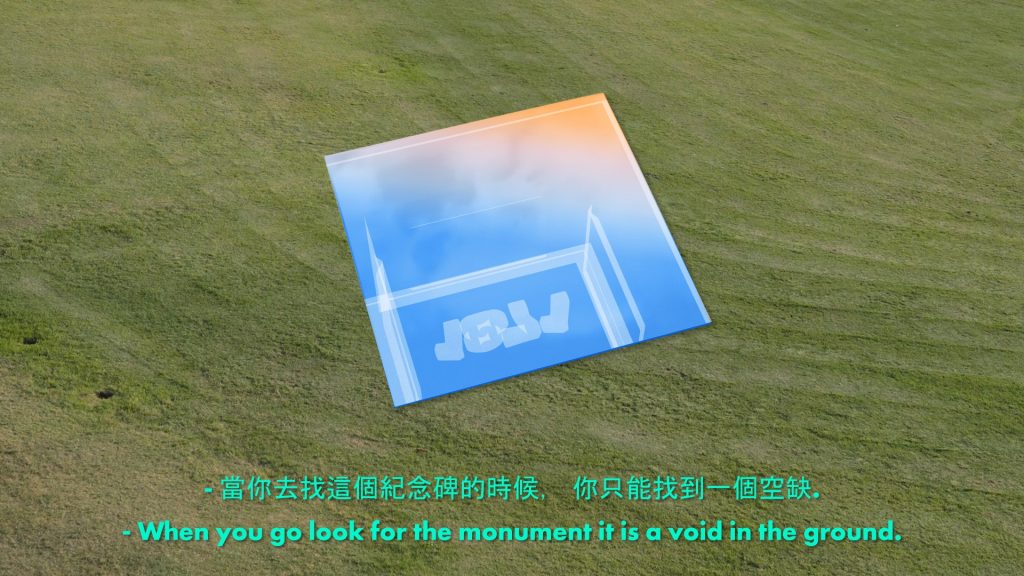
Victoria Fu’s project for “Monumental Perspectives” was commissioned by the Los Angeles County Museum of Art, 2023.
Earlier this fall, Fu debuted her new work 1871 as part of LACMA’s ongoing project series “Monumental Perspectives” in which artists and technologists are invited to create augmented reality monuments that bring to light the hidden histories of Los Angeles communities. Other participating artists include Yassi Mazandi, Rashaad Newsome, Ruben Ortiz Torres, and Alison Saar. These monuments can be found at locations across Los Angeles including LACMA, Lincoln Park, Los Angeles State Historic Park, Santa Monica, and Exposition Park.
Recently we caught up with Fu at her university studio to learn more about her process, how her practice changes depending on her location, and more.
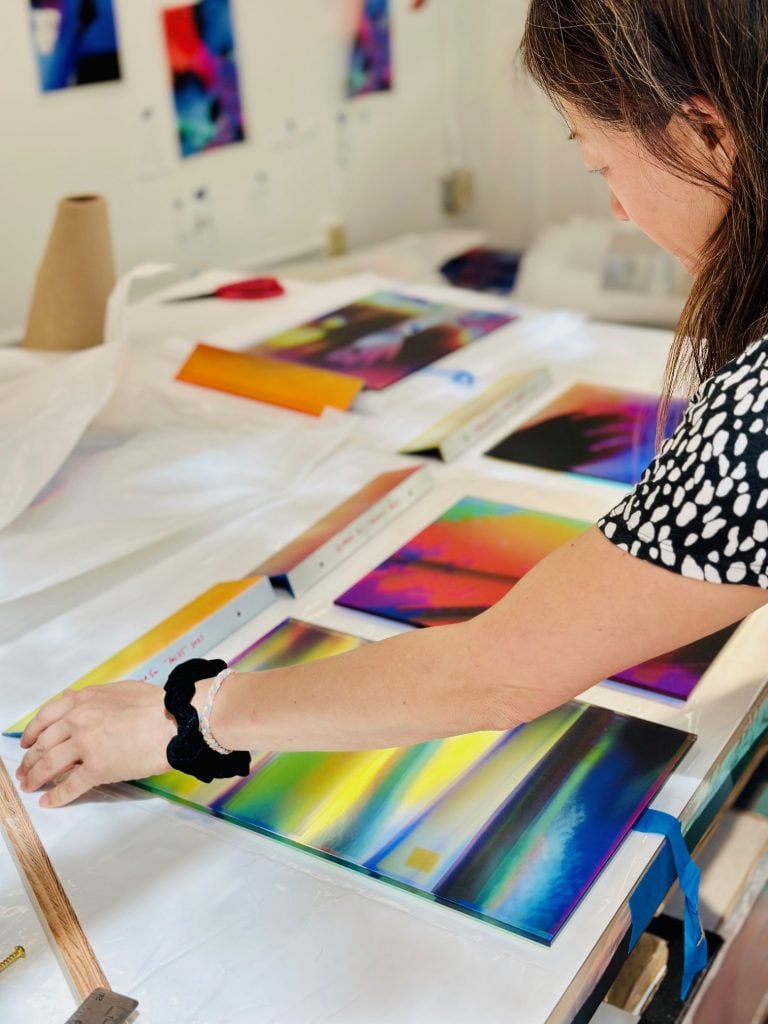
Courtesy of Victoria Fu.
Where is your studio? How would you describe what you do there?
My “studio” is a collection of spaces where I like to work, depending on what projects I have going on at the moment, and what part of the process I’m on. I have a home studio—a smaller “clean” space where I like to brainstorm, sketch, read, and think in the mornings when everyone is out of the house. It’s quiet, and I like to pace around, fix myself something to eat, and meander. Most of my actual production is done at my studio on the campus where I teach. I like my huge, rolling tables and seltzer in the fridge. The most important thing about the studio is where it’s located: I’m steps away from the large-format printers, production studio, a/v equipment, woodshop, etc., because the studio is embedded in a university art department.
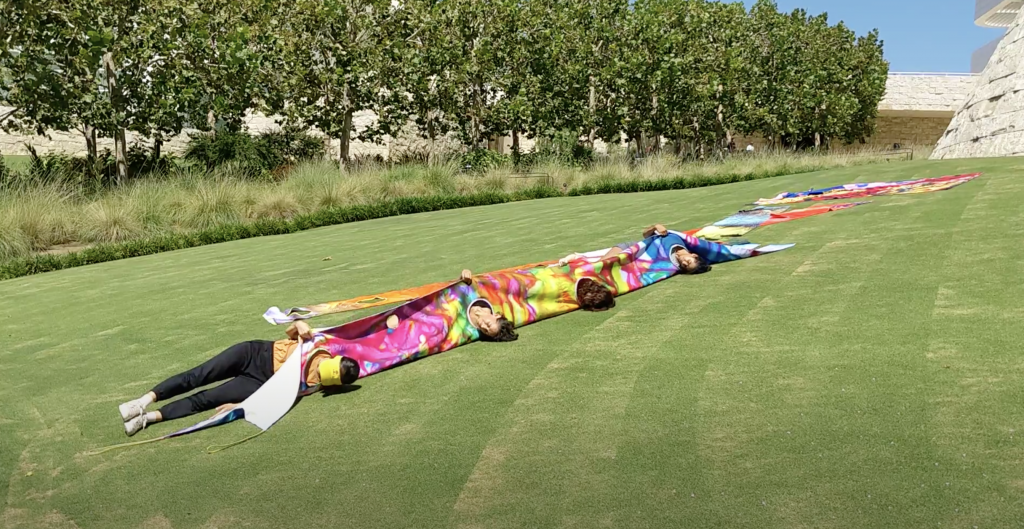
Courtesy of Victoria Fu.
How does working in a university environment influence your work?
For me, teaching and artmaking are so intertwined, and I’ll often be thinking about the readings, artworks, or films we discussed in class when I go to my studio afterward, which is filled with my books. It’s also where community is. There’s a super long picnic table right outside my studio where my colleagues—fellow artists, architects, art historians—gather for lunch every weekday during most of the year. Lunch is usually a welcome break for me, or I go on a walk with a friend. I find myself more able to get into a flow when I move about.
What’s a typical day in the studio like for you?
I do many moving image art installations for museum and gallery spaces, so I often edit in the studio or mock up an artwork or exhibition using multiple projectors or monitors. But I have projects of all types and formats. Most recently I’ve been working on an Augmented Reality piece for LACMA’s Monumental Perspectives, so I’ve been zooming a lot from the studio with the Snapchat Lens Creators and my assistant Jordan.
What do you like to do outside of the studio?
I get out of the studio quite a bit: scouting locations, going on-site at L.A. Historic State Park, and meeting up with the staff at the Chinese American Museum, for example.
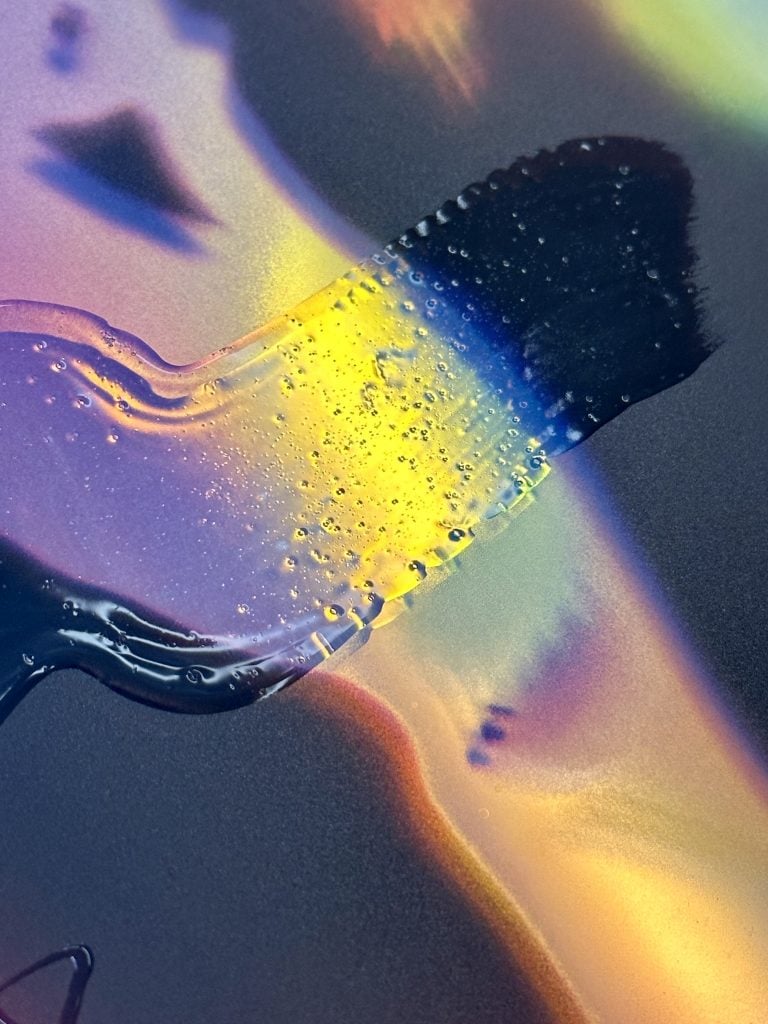
An example of one of Victoria Fu’s paintings on printed images on glass.
Do you work on one thing at a time or do you have multiple works in process at the same time?
I often have multiple projects going on, so, for example, alongside the AR piece for LACMA, I have been making new objects for a show in Lisbon, Portugal, with my Chicago-based gallery, DOCUMENT. They are paintings on printed images on glass (image included).
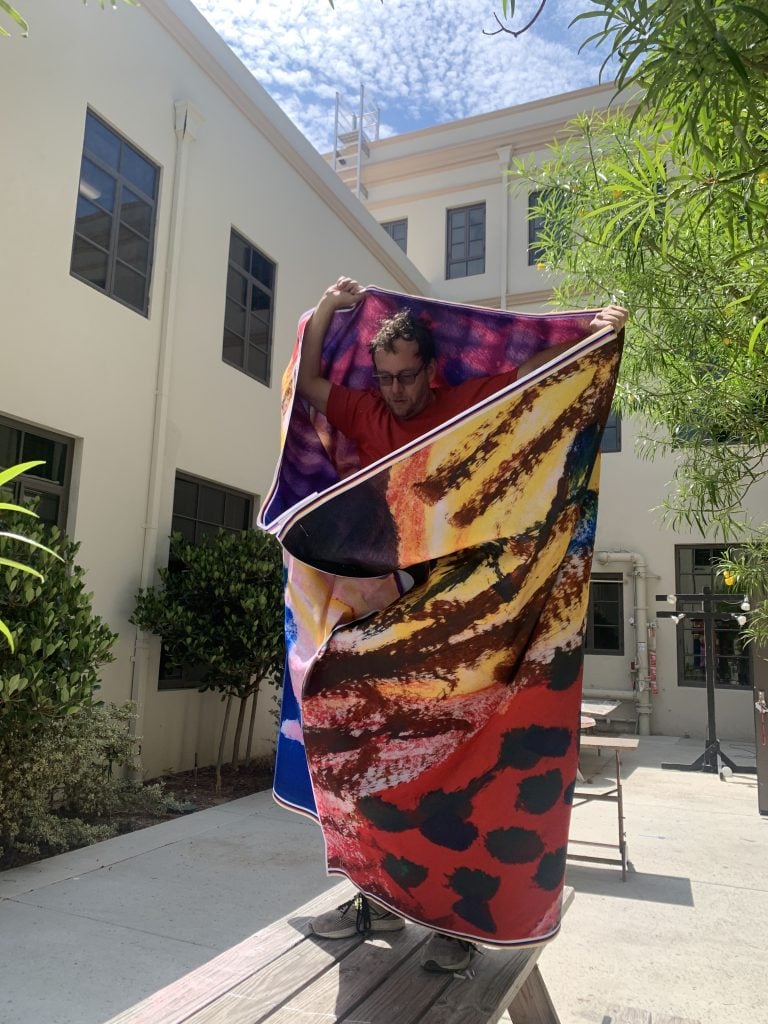
Courtesy of Victoria Fu.
What’s something unexpected we might find in your studio?
I am almost always working on some project with my frequent collaborator, painter Matt Rich. So you might be surprised to see in the studio lots of paint, a sewing machine with tons of our printed fabric, foam core models of escalator sets, and rainbows everywhere. We’re currently working on designing a subway station in Los Angeles, and we use a lot of cut paper images for collage in our process. We are almost always making more giant fabric objects that get both exhibited and performed in by collaborators. For a recent series of performances at the Getty, we had the fabric pieces laid on the grass outside while we measured and cut because it was too big for our studios–they are often for multiple bodies to inhabit.
More Trending Stories:
Art Dealers Christina and Emmanuel Di Donna on Their Special Holiday Rituals
Stefanie Heinze Paints Richly Ambiguous Worlds. Collectors Are Obsessed
Inspector Schachter Uncovers Allegations Regarding the Latest Art World Scandal—And It’s a Doozy
Archaeologists Call Foul on the Purported Discovery of a 27,000-Year-Old Pyramid
The Sprawling Legal Dispute Between Yves Bouvier and Dmitry Rybolovlev Is Finally Over